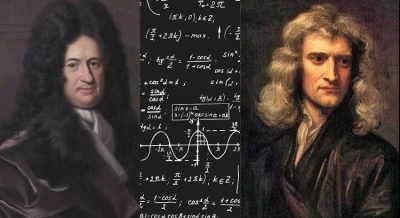
We may remember Newton mostly in association with the theory of gravity and the story of the apple tree. But he was also a great mathematician on par with legendary figures like Archimedes and Gauss. Newton’s contributions paved the path for numerous mathematical developments in the succeeding years.
Until Newton, algebraic problems where the answer was not a whole number posed a problem for mathematicians. The formula published by Newton in 1676 called ‘binomial theorem’ effectively resolved this issue. It has been said that through Newton’s works, there was remarkable advancement in every branch of mathematics at the time.
Newton (along with mathematician Gottfried Wilhelm von Leibniz) is credited with developing the essential theories of calculus. He developed the theory of calculus upon the earlier works by British mathematicians John Wallis and Isaac Barrow, and prominent mathematicians Rene Descartes, Pierre de Fermat, Bonaventura Cavalieri, Johann van Waveren Hudde and Gilles Personne de Roberval.
While Greek geometry was static, calculus allowed mathematicians and engineers to make sense of the dynamic world around them. They could now make sense of motion such as the orbits of planets and the flow of fluids.
Many modern historians believe calculus was developed independently by Newton and Leibniz, using different mathematical notations. Leibniz was however, the first to publish his results.
Picture Credit : Google

